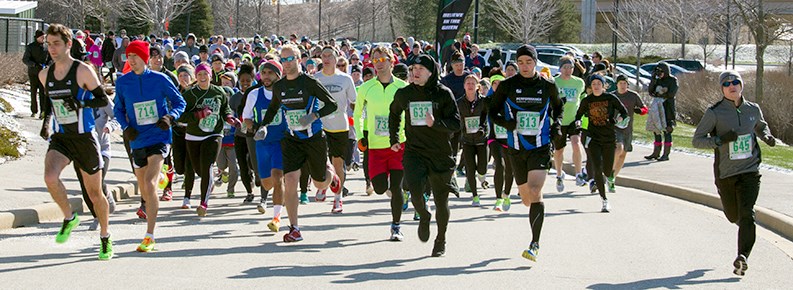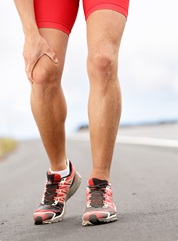IT Band Syndrome in Brookfield, WI

Iliotibial band syndrome is a common injury, occurring in up to 12 percent of all runners (1). Because of the frequency with which it occurs, it is important to understand why it happens, what you can do to prevent it, and how to get rid of it should you have symptoms.
 Research had suggested that iliotibial band syndrome symptoms were produced by snapping back and forth over the lateral femoral condyle which inflamed the bursa trapped beneath. However, more recent research confirms that this theory is invalid. Using MRI-analysis researchers determined that the IT Band does not “snap” back and forth causing pain, but that increased tension on the IT Band causes an enthesopathy or bone pain at the insertion of the IT Band at the knee (2). The muscle that is most often the cause of increased tension on the IT Band is a small muscle located on the lateral aspect of the hip called the Tensor Fascia Latae or TFL. It ties into the hip and the IT Band and runs laterally to the knee.
Research had suggested that iliotibial band syndrome symptoms were produced by snapping back and forth over the lateral femoral condyle which inflamed the bursa trapped beneath. However, more recent research confirms that this theory is invalid. Using MRI-analysis researchers determined that the IT Band does not “snap” back and forth causing pain, but that increased tension on the IT Band causes an enthesopathy or bone pain at the insertion of the IT Band at the knee (2). The muscle that is most often the cause of increased tension on the IT Band is a small muscle located on the lateral aspect of the hip called the Tensor Fascia Latae or TFL. It ties into the hip and the IT Band and runs laterally to the knee.
So why is the TFL tight? Based on our understanding of the interplay between the Central Nervous System (CNS) and the musculoskeletal (muscles, joints, ligaments, etc) system, the TFL is most likely tight because it’s trying to compensate for a muscle not doing its job correctly, like the gluteus medius. When the g.med isn’t working correctly the CNS activates other muscles nearest the dysfunctional/ weakened muscle. That muscle is the TFL. The G.med and G.max are very important in eccentrically controlling internal rotation of the femur while walking or running (3, 4). When they don’t work correctly either through posture (sitting on them all day) or through uni-plane use only (only sagittal plane motions like running) then the brain needs to pick a substitute. The TFL is usually picked because of it’s proximity to these muscles. This in turn will tighten the IT Band and may lead to IT Band syndrome.
IT Band Syndrome Symptoms
The pain associated with this syndrome is often described as “burning” and can be experienced at the lateral aspect of the knee, along the outside of the thigh, or both.
Prevention & Self Treatment
There are several preventative measures that you can take to avoid IT Band Syndrome, including foam rolling, stretching, and strengthening exercises. When foam rolling, it is important to not only focus on the areas where you may be experiencing some discomfort, but also the areas in close proximity. We always instruct our patients to roll out the outside of the hip, targeting the TFL (tensor fasciae latae muscle) and glutes, and also the quads. Glute strengthening exercises can also assist in restoring muscle balance between the gluteal and TFL muscles. We generally recommend clam shells and glute bridges as a good place to start.
Traditional Treatment
Traditional medical treatment includes rest, ice, anti-inflammatory medication, physical therapy referral, corticosteroid injection and possible surgical options.
Our Integrated Approach
Our integrated approach to care involves a thorough exam of your current condition, including gait analysis, functional movement screening and orthopedic testing. Your treatment will include some form of manual therapy (manual myofascial release, Graston Technique, or trigger point dry needling), as well as specific corrective exercises and stretches.
Graston Technique and Active Release Technique (ART)
The primary goals of a practitioner using Graston Technique and/or ART include:
- Aid in the disruption/breakdown of the adhesions and trigger points within the muscle and fascia.
- Increase normal tissue flexibility and movement
- Aim to restore full flexibility, balance and stability
Treatment with Graston and ART techniques is often applied to the IT-band, TFL muscle, and vastus lateralis (one of the four quadriceps muscles). Most patients report a positive response within 2-4 treatments.
This article is part of a series looking at common running injuries, how to prevent them, and how to treat them if they do occur. Read more about these other injuries as well:
- Plantar Fasciitis
- Achilles Tendonitis
- IT-Band Syndrome
- Shin Splints
- Runner’s Knee
- Piriformis Syndrome/Sciatica
Sources:
1. Fredericson M, Wolf C. Iliotibial band syndrome in runners: innovations in treatment. Sports Med, 2005;35:451-459.
2. Fairclough J, Hayashi K, Toumi H, et al. The functional anatomy of the iliotibial band during flexion and extension of the knee: implications for understanding iliotibial band syndrome. J Anat, 2006;208:309-316.
3. Ferber R, Noehren B, Hamill J, et al. Competitive female runners with a history of iliotibial band syndrome demonstrate atypical hip and knee kinematics. J Orthop Sports Phys Ther, 2010;40:52.
4. Fredericson M, Cookingham C, Chaudhari A, et al.. Hip abductor weakness in distance runners with iliotibial band syndrome. Clin J Sport Med, 2000;10:169-175.
5. Falvey E, Clark R, Franklyn-Miller A, et al. Iliotibial band syndrome: an examination of the evidence behind a number of treatment options. Scand J Med Sci Sports, 2010;20:580-587.
6. Hopper D, Deacon S, Das S, et al. Dynamic soft tissue mobilization increases hamstring flexibility in healthy male subjects. Br J Sports Med, 2005;39:594-598.
 262-373-9168
262-373-9168



